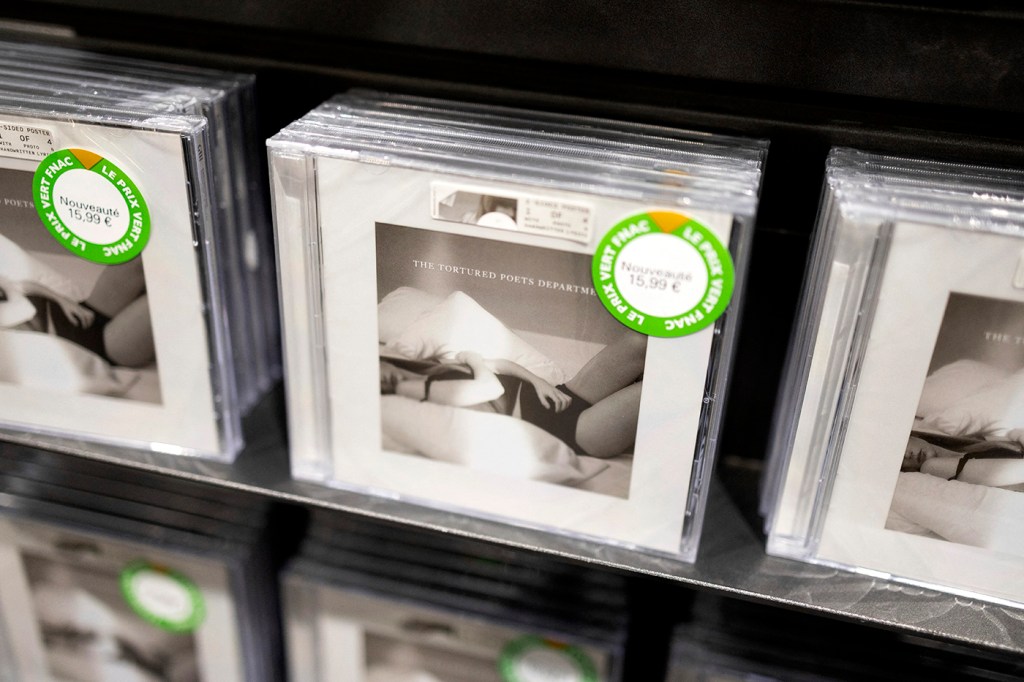Did Swifties — and other devoted fandoms — kill the music review?
Taylor Swift released a new album. Critics wrote reviews. Then her fandom went off — to the point where one publication left a byline off a review to protect the writer.

“Amateur.”
“Who cares?”
“Very unprofessional.”
These were some of the responses on X (formerly known as Twitter) last week after Taylor Swift released her latest album, “The Tortured Poets Department.” But the reactions weren’t to the album itself, but to negative reviews.
This sort of response might seem standard. Many people respond to writing they don’t like by nitpicking or making accusations of the writer being biased. But the vitriol with Swift’s fans is on another level.
Paste Magazine went so far as not identifying its reviewer — the author’s name was not included at the top of the story — citing safety concerns after the last person to review one of Swift’s albums for digital publication was threatened.
The decision to leave a byline off a review is a significant one from a journalistic standpoint, said Meg Heckman, an associate journalism professor at Northeastern University. Bylines create credibility and transparency for news organizations and help writers connect with their audience. Running a piece without any sort of byline is an unusual approach, she added, and not without significance.
“I don’t know if pulling a byline is necessarily the right way to handle that kind of threat,” Heckman said. “I don’t know if I’ve ever seen that approach before. … I think (it) runs the risk of diminishing a news organization’s credibility.”
But Heckman said journalists get much more intense pushback now in digital spaces. Many of it crosses a line, she added, from criticizing a story to attacking the writer and causing concerns for safety.
“If you take what Paste published at face value,” Heckman said. “Those editors were attempting to protect the safety of a journalist who said that they had been targeted the last time they wrote a review about Taylor Swift.
Featured Posts
“Regardless of what you think of Paste, Taylor Swift and the state of criticism in general, it’s a good thing that newsroom leaders are starting to take journalist safety concerns more seriously in online spaces.”
This type of frantic fandom goes back to the days of Frank Sinatra, commonly known as “Swoonatra” due to the reaction his performances evoked, said Junauro Landgrebe, a music lecturer and lessons and ensemble coordinator at Northeastern University.
Sinatra was the first artist to garner a large fanbase, coining the term “fan” by reporters covering him. This set the stage for the likes of Elvis Presley and The Beatles after him.
“(The reviews) never stopped the fans from listening to the music,” Landgrebe said. “The criticisms did happen and there were certain fans that were really mad about how (these artists) were criticized.”
Along the way, music reviews became a bit redundant, said David Herlihy, a teaching professor of music at Northeastern. Herlihy said people used to discover new music through the radio or through reviews. When internet streaming began, it eliminated what Herlihy described as “the broadcast dissemination of content.”
Where once music reviews were a way for people to discover new artists, they’ve now become drowned out by streaming services’ algorithms and social media.
“(Music reviews) are kind of a remnant of the 20th century,” Herlihy said. “(They’re) very much a creature of mainstream media where the only way you hear about something was it being proclaimed from one of these gatekeepers.”
What’s changed today, Landgrebe said, is the level to which the reactions from fans rise.
“We have got to remember what ‘fan’ means,” Landgrebe said. “It’s short for ‘fanatic.’ … We get to these points where it can be really threatening … I don’t blame (Paste). There’s a lot of this energy out there now. … So I think people are afraid.”
Despite these concerns, Landgrebe predicts music criticism will continue on.
“I don’t think it’s going to change anything for music journalists and critics,” Landgrebe said. “I think it’s really unfortunate.”










